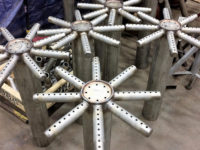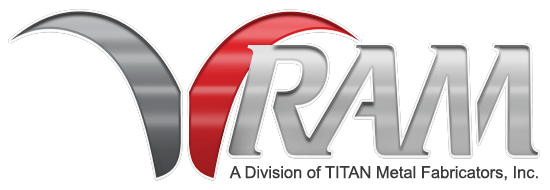
310 SS Steam Spray Nozzel
Duplex Stainless Steel can be difficult to weld properly. The balance of properties is the key.
Duplex Stainless Steels have a microstructure that contains both ferrite and austenite. When Duplex Stainless Steel is melted, it solidifies from the liquid phase to a completely ferritic structure. As the material cools, approximately half of it changes to an austenitic structure. The result is an alloy with a microstructure of roughly 50% austenite and 50% ferrite. Duplex alloys have higher strength and better stress corrosion cracking resistance than most austenitic alloys and greater toughness than ferritic alloys, especially at low temperatures.
RAM has the experience and knowledge to make sure each weld is always correct. Our extensive experience with reactive metals makes RAM an excellent choice for all your Duplex Stainless Steel requirements.
Cost Benefits of Duplex Stainless Steel May Make It a Good Choice for Your Project.
- Increased corrosion resistance than austenitic stainless steel
- Better thermal conductivity than austenitic stainless steel
- Higher strength than austenitic stainless steel
- Increased corrosion resistance than austenitic stainless steel
Duplex Stainless Steel may be a good material selection for your project. Call RAM to discuss your application and we can quickly see if you should consider Duplex. When it comes to the fabrication of Duplex and Super Duplex Stainless Steel, RAM has the experience and knowledge to make sure it is engineered, built and inspected to the highest standards.
Duplex Stainless Steel Fabrications
RAM regularly fabricates the following applications of Duplex Stainless Steel and custom process equipment:
- Pre-Engineered OEM Designed Custom Parts / Systems made with Duplex Stainless Steel
- Duplex Stainless Steel Reactors
- Duplex Stainless Steel Columns Sections
- Duplex Stainless Steel Pressure Vessels
- Duplex Stainless Steel Piping Systems
- Duplex Stainless Steel Pipe
- Duplex Stainless Steel Spargers
Duplex Stainless Steel is very well suited to many industrial processes. The following are some of the environments in which Duplex is fully resistant*.
|
|
|
*Please Note: Final selection of material must be based on actual evaluation of the metal in the corrosive medium under study and is the responsibility of the end user. Temperature and concentration play an important factor in corrosion resistance.
Want to know more?
Please contact us by phone at (979) 885-2244. Email any questions to sales@reactivemetal.com.
